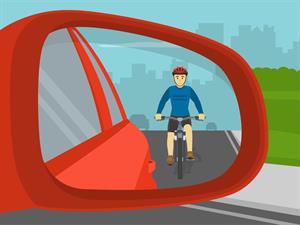PDF chapter test TRY NOW
Have you ever noticed the images in the side mirrors of a cycle or a car while riding? If you observe it carefully, you will find that the image in the mirror looks smaller than the object itself. What do you think the reason will be?

Have you ever seen your image at the stainless steel plates and spoons while having dinner? The image formed at the steel plate will be different from that of the spoon. The image at the steel plate will be erect and of the same size, whereas the steel spoon image will also be erect but smaller or larger. Not only a spoon, any curved surface can show such an image.

The outer side of the spoon will show a smaller erect image, different from the inner side, which shows a larger erect image. The image will be inverted when the distance is increased from the object.

The curved shining mirror is known as the spherical mirror. Here, the steel spoon acts as a spherical mirror due to its shining surface.
Concave and convex mirror
If the reflecting surface of a mirror is curved inwards, it is called a concave mirror. The inner side of a steel spoon acts like a concave mirror. It is also known as a converging mirror.
If the reflecting surface is curved outwards, then it is a convex mirror. The outer surface of a steel spoon acts like a convex mirror. It is also known as a diverging mirror.

Illustration
A rubber ball or a tennis ball is taken and cut into two halves with a knife. The inner surface of a ball is concave, and the outer surface is convex.

Important!
Caution: Use a knife under the supervision of adults.
Reference:
https://www.wikihow.com/images/5/55/Cut-Tennis-Balls-Final.jpg
